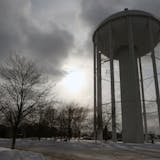Power plants and industrial facilities that emit carbon dioxide, the primary driver of global warming, are hopeful that Congress will keep tax credits for capturing the gas and storing it deep underground.
The process, called carbon capture and sequestration, is seen by many as an important way to reduce pollution during a transition to renewable energy.
But it faces criticism from some conservatives, who say it is expensive and unnecessary, and from environmentalists, who say it has consistently failed to capture as much pollution as promised and is simply a way for producers of fossil fuels like oil, gas and coal to continue their use.
Here's a closer look:
How does the process work?
Carbon dioxide is a gas produced by burning of fossil fuels. It traps heat close to the ground when released to the atmosphere, where it persists for hundreds of years and raises global temperatures.
Industries and power plants can install equipment to separate carbon dioxide from other gases before it leaves the smokestack. The carbon then is compressed and shipped — usually through a pipeline — to a location where it's injected deep underground for long-term storage.
Carbon also can be captured directly from the atmosphere using giant vacuums. Once captured, it is dissolved by chemicals or trapped by solid material.

![A black bear stopped after crossing Big Bay Road on Madeline Island, the largest of the Apostle Islands in Wisconsin, on Monday, May 31, 2021. ]](https://arc.stimg.co/startribunemedia/PWNYGIY3WTSWDBOGOYD775DPP4.jpg?&w=80&ar=1:1&fit=crop)

